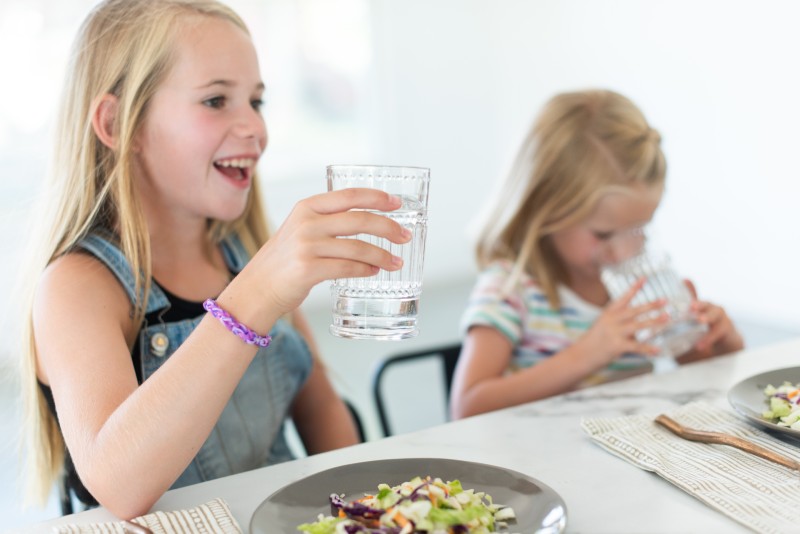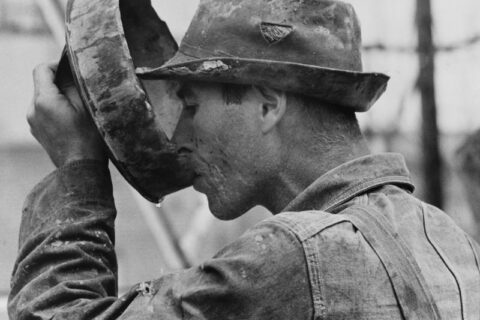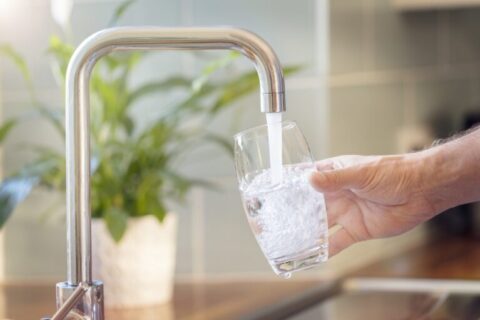How Much Chlorine Is in Tap Water?

Whether you’re getting a drink, taking a shower, or cooking a meal, all you need to do is turn on the faucet. You probably don’t give much thought to your tap water or the journey it takes to get there, but water quality is critical for your family’s health and safety.
Disinfection is the key to maintaining drinkable tap water, and chlorine is the backbone of modern water disinfection. But how much chlorine is in your tap water? Is it as effective as it claims to be? And what level of chlorine is safe to drink? The answers to these questions will help you decide if you want to remove chlorine from your tap water.
Why is Chlorine Added to Drinking Water?
While rudimentary water treatment dates back to at least 4000 BC, it wasn’t until the late 19th century that scientists learned how microbes spread illnesses through drinking water. Prior to this, lethal diseases such as dysentery, cholera, and typhoid fever were quite common. Consider that in 1890, the death rate from typhoid fever in the US was roughly 50 per 100,000 people. By comparison, the death rate from car accidents in 2019 was 11 per 100,000 people.
The first city to chlorinate its drinking water was Jersey City in 1908. The use of chlorine as a disinfectant spread quickly, and the prevalence of waterborne diseases in the United States dropped dramatically. The modern-day death rate from typhoid fever has consistently remained below 0.16 per 100,000 people since 1995. Plus, 86 percent of those cases are associated with foreign travel. Clearly, the life-saving benefits of chlorinated water cannot be understated.
How Effective is Chlorination?
While it has proven to be a powerful tool against waterborne diseases, chlorination isn’t flawless. One major drawback is that the effects of chlorine don’t last very long. To ensure sufficient disinfection, some municipal water suppliers use chloramines. These secondary disinfectants offer longer-lasting protection against microbes, but they aren’t a perfect solution, either.
Both chlorine and chloramines—along with other disinfectants—produce byproducts when they come in contact with organic material in the water. Disinfection byproducts (DBPs) are associated with various health risks, including heart disease, eczema, asthma, and an increased risk of bladder cancer.
What Level of Chlorine is Safe to Drink?
Today, chlorine is the most common chemical used for water disinfection in the US. It has proven enormously beneficial to public health, but it’s not without its risks. That’s why the Environmental Protection Agency (EPA) has determined threshold values for the amount of chlorine allowed in drinking water. The current Maximum Residual Disinfectant Level (MRDL) is 4.0 milligrams per liter (mg/L), or 4.0 parts per million (ppm).
It’s important to recognize that EPA guidelines may not be ideal for everyone (and some question the levels set). Some people are more sensitive to chemicals such as chlorine and chloramines, so for them, drinking water with nearly 4 mg/L of DBPs could lead to serious health concerns.
Showering in chlorinated water also presents negative side effects, including skin irritation and brittle hair. Chlorine can also be absorbed through the skin, and inhaling steam from a hot shower sends chlorine and its byproducts into your lungs. Even low-level chlorine exposure can prove detrimental because your lungs aren’t equipped to handle possible toxins the way your digestive system is. As a result, cancer rates may be higher for people who shower, bathe, and swim in chlorinated water.
How Much Chlorine is in Arizona Tap Water?
The level of chlorine or DBPs in your drinking water varies based on where you live, where you get your water, and what time of year it is. Check the most recent water quality report from your municipal water supplier to get a general idea of how your water supply is treated and what level of residual disinfectant might be in your tap water.
The City of Tucson’s 2019 Annual Water Quality Report identified that the monthly average chlorine level ranged from 0.89 to 1.0 ppm. However, the report does not disclose that Arizona municipalities often add more chlorine to the drinking water supply during the summer. As a result, residual disinfectant levels rise this time of year to the point that homeowners can sometimes smell and taste it in their tap water.
Water Filtration Reduces Chlorine in Drinking Water
On a national scale, ingesting chlorinated tap water is considered safer than potentially contracting a waterborne disease from drinking non-disinfected water. Still, this chemical and its byproducts may pose health risks when consumed over time. They also make your water taste unpleasant and affect your hair and skin. These are all very compelling reasons to remove chlorine and DBPs from your water once it arrives at your home safely and uncontaminated.
Activated carbon filtration systems enhance the taste, smell, and safety of your drinking water by absorbing chlorine and its byproducts. A whole-house dechlorinator is the best way to continuously and automatically filter the water at every tap and showerhead in your home. No water is wasted to dechlorinate, so your water bills won’t increase.
If you want to enjoy clean, filtered water from the tap, choose Kinetico Quality Water to install a system in your Tucson-area home. Combine a Kinetico dechlorinator with a Kinetico water softener for the ultimate in whole-home water treatment! Call us now at 520-428-5497 to schedule your free water analysis and receive personalized advice in selecting the ideal water filtration system for you.


